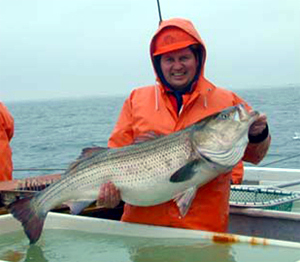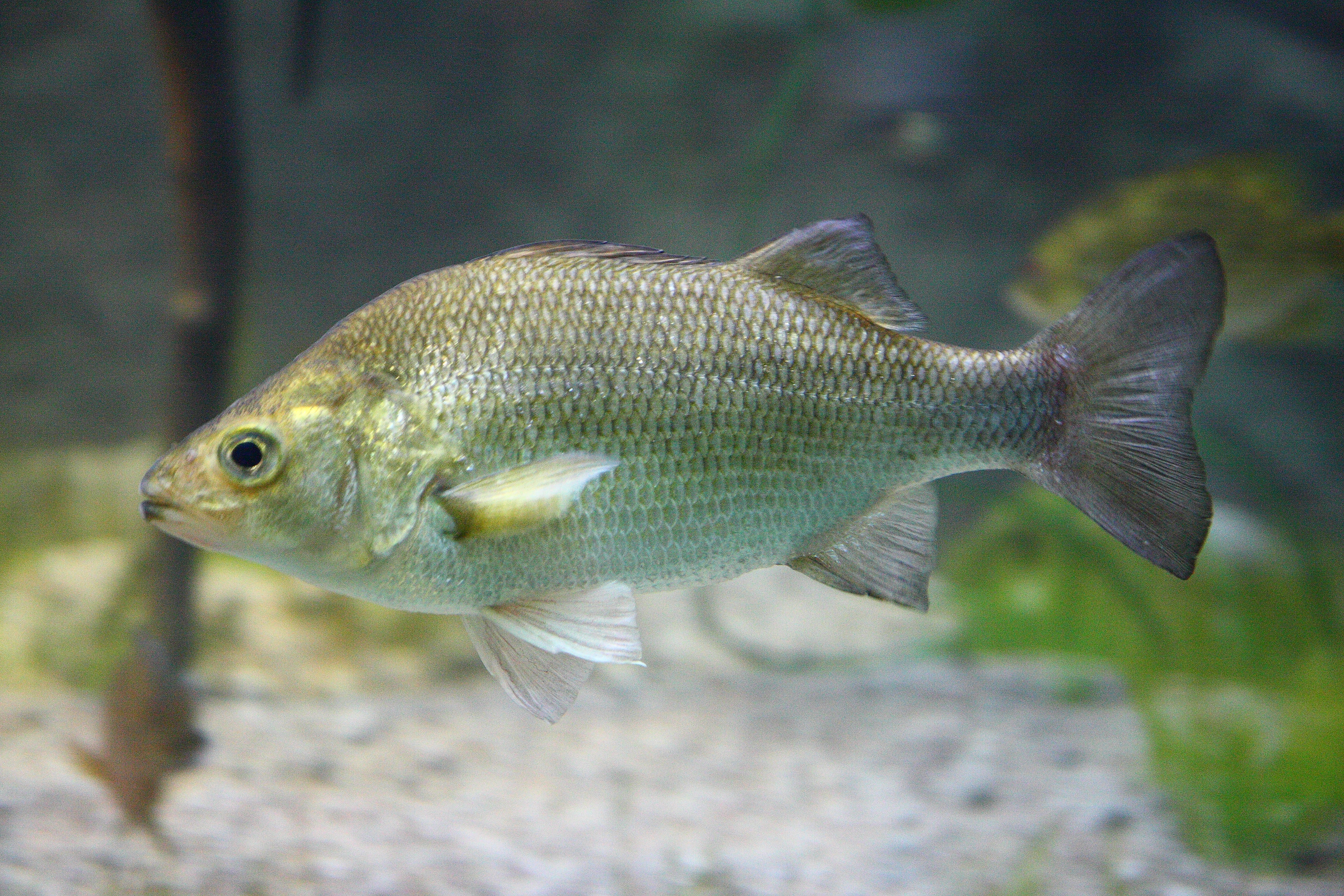|
European Sea Bass
The European bass (''Dicentrarchus labrax'') is a primarily ocean-going fish native to the waters off Europe's western and southern and Africa's northern coasts, though it can also be found in shallow coastal waters and river mouths during the summer months. It is one of only six species in its family, Moronidae, collectively called the temperate basses. It is fished and raised commercially and is considered the most important fish currently cultured in the Mediterranean. In Ireland and the United Kingdom, the popular restaurant fish sold and consumed as sea bass is exclusively the European bass. In North America, it is widely known by one of its Italian names, branzino. European bass are a slow-growing species that take several years to reach adulthood. An adult European seabass usually weighs around . European bass can reach measurements of up to in length and in weight, though the most common size is only about half of that at . Individuals are silvery grey and sometimes a ... [...More Info...] [...Related Items...] OR: [Wikipedia] [Google] [Baidu] |
Carl Linnaeus
Carl Linnaeus (; 23 May 1707 – 10 January 1778), also known after his ennoblement in 1761 as Carl von Linné Blunt (2004), p. 171. (), was a Swedish botanist, zoologist, taxonomist, and physician who formalised binomial nomenclature, the modern system of naming organisms. He is known as the "father of modern taxonomy". Many of his writings were in Latin; his name is rendered in Latin as and, after his 1761 ennoblement, as . Linnaeus was born in Råshult, the countryside of Småland, in southern Sweden. He received most of his higher education at Uppsala University and began giving lectures in botany there in 1730. He lived abroad between 1735 and 1738, where he studied and also published the first edition of his ' in the Netherlands. He then returned to Sweden where he became professor of medicine and botany at Uppsala. In the 1740s, he was sent on several journeys through Sweden to find and classify plants and animals. In the 1750s and 1760s, he continued to collect an ... [...More Info...] [...Related Items...] OR: [Wikipedia] [Google] [Baidu] |
Systema Naturae
' (originally in Latin written ' with the ligature æ) is one of the major works of the Swedish botanist, zoologist and physician Carl Linnaeus (1707–1778) and introduced the Linnaean taxonomy. Although the system, now known as binomial nomenclature, was partially developed by the Bauhin brothers, Gaspard and Johann, Linnaeus was first to use it consistently throughout his book. The first edition was published in 1735. The full title of the 10th edition (1758), which was the most important one, was ' or translated: "System of nature through the three kingdoms of nature, according to classes, orders, genera and species, with characters, differences, synonyms, places". The tenth edition of this book (1758) is considered the starting point of zoological nomenclature. In 1766–1768 Linnaeus published the much enhanced 12th edition, the last under his authorship. Another again enhanced work in the same style and titled "'" was published by Johann Friedrich Gmelin between 1788 a ... [...More Info...] [...Related Items...] OR: [Wikipedia] [Google] [Baidu] |
Atlantic Ocean
The Atlantic Ocean is the second-largest of the world's five oceans, with an area of about . It covers approximately 20% of Earth's surface and about 29% of its water surface area. It is known to separate the " Old World" of Africa, Europe and Asia from the "New World" of the Americas in the European perception of the World. The Atlantic Ocean occupies an elongated, S-shaped basin extending longitudinally between Europe and Africa to the east, and North and South America to the west. As one component of the interconnected World Ocean, it is connected in the north to the Arctic Ocean, to the Pacific Ocean in the southwest, the Indian Ocean in the southeast, and the Southern Ocean in the south (other definitions describe the Atlantic as extending southward to Antarctica). The Atlantic Ocean is divided in two parts, by the Equatorial Counter Current, with the North(ern) Atlantic Ocean and the South(ern) Atlantic Ocean split at about 8°N. Scientific explorations of the A ... [...More Info...] [...Related Items...] OR: [Wikipedia] [Google] [Baidu] |
Spotted Seabass
The spotted seabass (''Dicentrarchus punctatus'') is a species of temperate bass native to marine and brackish waters of the coastal eastern Atlantic Ocean from the English Channel to the Canary Islands and Senegal, as well as through the Mediterranean Sea. Habitat The spotted seabass generally lives in brackish water at depths below approximately 30 meters. It generally lives in subtropical waters, ranging from the coast of Brittany in the north to the coast of Africa and the Canary Islands in the south and also encompassing almost all of the coastline of the eastern Mediterranean Sea and going as far west as the Azores. Description The spotted seabass can grow up to a size of about 70 cm; however, it usually only reaches a size of about 30 cm. It is a silver-gray fish covered in black spots and also has a blue back whilst alive. These black spots are only found on the adults; as well, the opercle has a rather large black spot. Biology The spotted seabass is al ... [...More Info...] [...Related Items...] OR: [Wikipedia] [Google] [Baidu] |
Striped Bass
The striped bass (''Morone saxatilis''), also called the Atlantic striped bass, striper, linesider, rock, or rockfish, is an anadromous perciform fish of the family Moronidae found primarily along the Atlantic coast of North America. It has also been widely introduced into inland recreational fisheries across the United States. Striped bass found in the Gulf of Mexico are a separate strain referred to as Gulf Coast striped bass. The striped bass is the state fish of Maryland, Rhode Island, and South Carolina, and the state saltwater (marine) fish of New York, New Jersey, Virginia, and New Hampshire. The history of the striped bass fishery in North America dates back to the Colonial period. Many written accounts by some of the first European settlers describe the immense abundance of striped bass, along with alewives, traveling and spawning up most rivers in the coastal Northeast. Morphology and lifespan The striped bass is a typical member of the family Moronidae in shap ... [...More Info...] [...Related Items...] OR: [Wikipedia] [Google] [Baidu] |
White Perch
The white perch (''Morone americana'') is not a true perch but is a fish of the temperate bass family, Moronidae, notable as a food and game fish in eastern North America. In some places it is referred to as "Silver Bass". The name "White perch" is sometimes applied to the white crappie. Generally silvery-white in color, hence the name, depending upon habitat and size specimens have begun to develop a darker shade near the dorsal fin and along the top of the fish. This sometimes earns them the nickname "black-back". White perch have been reported up to in length and weighing . Although favoring brackish waters, it is also found in fresh water and coastal areas from the St. Lawrence River and Lake Ontario south to the Pee Dee River in South Carolina, and as far east as Nova Scotia. They are also found in the lower Great Lakes, Finger Lakes, Long Island Sound and nearby coastal areas, Hudson and Mohawk River system, Delaware Bay and Chesapeake Bay. It is also found occasionall ... [...More Info...] [...Related Items...] OR: [Wikipedia] [Google] [Baidu] |
Morone Chrysops White Bass Fish (white Background)
''Morone'' is a genus of temperate basses native to the Atlantic coast of North America and the freshwater systems of the southwestern and eastern United States The United States of America (U.S.A. or USA), commonly known as the United States (U.S. or US) or America, is a country primarily located in North America. It consists of 50 states, a federal district, five major unincorporated territorie .... Species The currently recognized species in this genus are: References Moronidae Extant Eocene first appearances {{Percoidea-stub ... [...More Info...] [...Related Items...] OR: [Wikipedia] [Google] [Baidu] |
White Bass
The white bass, silver bass, or sand bass (''Morone chrysops'') is a freshwater fish of the temperate bass family Moronidae. commonly around 12-15 inches long. The species' main color is silver-white to pale green. Its back is dark, with white sides and belly, and with narrow dark stripes running lengthwise on its sides. It has large, rough scales and two dorsal fins. They are widely distributed across North America, inhabiting large reservoirs and rivers. When mating in the spring, they are more often found in shallow rivers, creeks, and streams. They have been introduced in some places as sport fish and also to predate on nuisance fish, such as gizzard shad. It is the state fish of Oklahoma. Range White bass are distributed widely across the United States, especially in the Midwest. They are very abundant in Pennsylvania and the area around Lake Erie. Some native ranges of the white bass are the Arkansas River, western Lake Erie, the Detroit River, and Lake Poinsett in Sout ... [...More Info...] [...Related Items...] OR: [Wikipedia] [Google] [Baidu] |


.png)



